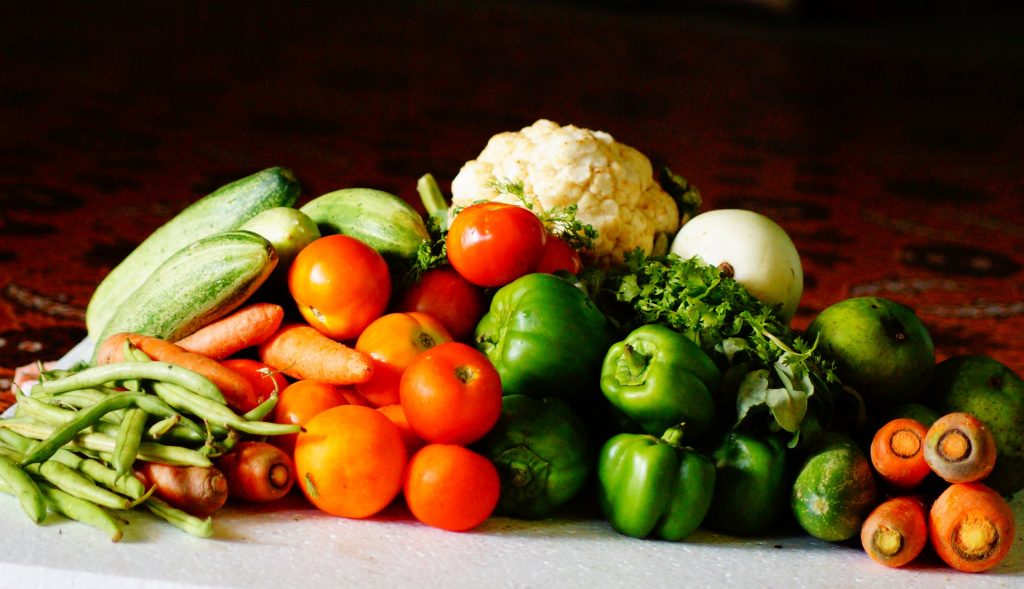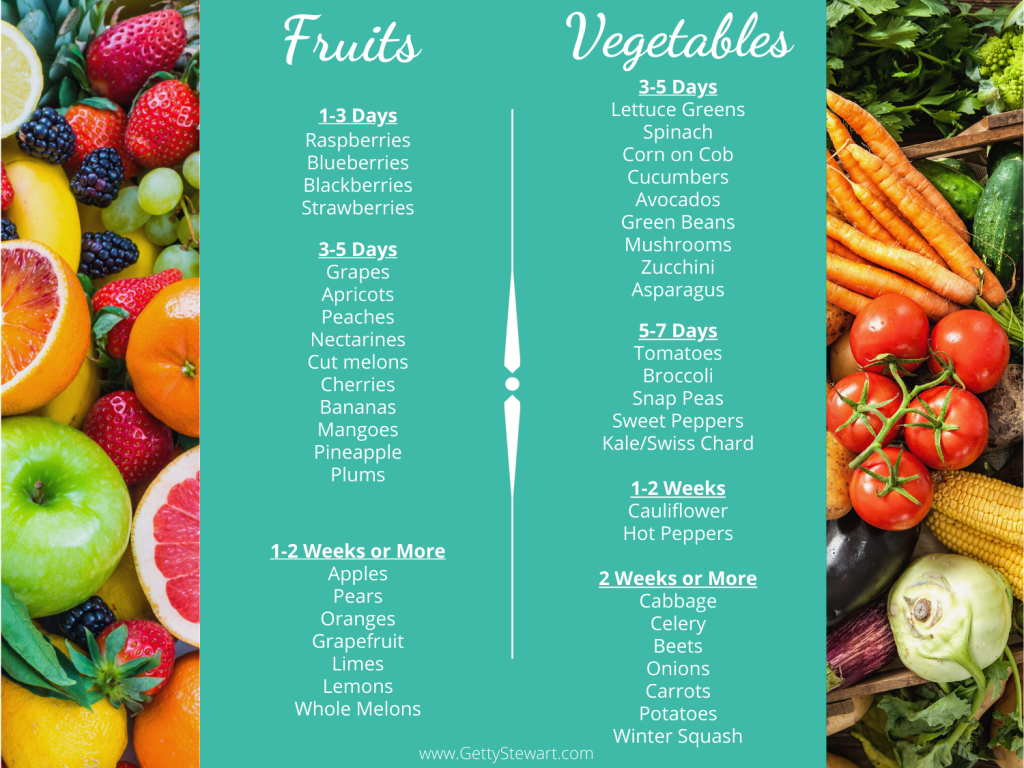
Make the most of your fresh food purchases by storing them carefully. Fresh, perishable foods like dairy products, fruits, vegetables, meat, poultry, fish, breads and leftovers require a little more attention to storing than non-perishables. Here are seven tips for keeping foods fresh and at peak quality for as long as possible.
- Buy Only What You Need
Resist the urge to buy the ‘Bonus Mega’ size pack of fresh food unless you know you are going to eat it. Fresh food is perishable and has a limited shelf life, so unless you eat it within 3-5 days, you need a plan to freeze it, can it, or dry it. If there is not a plan to preserve the extra quantities, you may end up tossing spoiled fresh food. Read more in Reduce Food Waste at Home. - Unpack Groceries As Soon As Possible
Temperature control is key to keeping fresh food fresh. After grocery shopping, go straight home and place fresh food into the refrigerator and out of the danger zone of 4°C/40°F to 60°C/140°F as quickly as possible. Read more about safe food temperatures in our article on Food Safety. - Practice FIFO – First In First Out
Rotate food in your fridge, freezer and cupboards so items you put in first (the ones with the earliest Best Before Date) are used first. When putting away groceries, move older food to the front and new items to the back. FIFO can maximize freshness and reduce food waste. - Eat the Most Perishable Produce First
Not all fruits and vegetables will maintain their quality equally long and some will spoil faster than others. Plan your meals and snacks so that produce is enjoyed at its best. Have strawberries and apples in the fridge? Eat the strawberries first because the apples will last much longer.
The following list describes the expected edible life of various fruits and vegetables:

- Store Fresh Food at Optimal Temperature
Listed below is the ideal storage conditions for different fresh foods. Notice that very few fruits maintain best quality outside the refrigerator. A fruit basket is a good way to encourage healthy snacking, but it can lead to loss of quality and faster spoilage.
Fresh bread is best kept at room temperature and out of the light, but any bread you will not eat within a few days should be kept in the freezer.
Use this chart for details regarding storage of fresh foods.
Ideal Storage for Fresh Food
| Type of Food | Where to Store | Use Within | Other Storage Tips |
| Bread & Bakery Products | Room temperature cupboard or bread box | 2-5 days | Will go stale in fridge. Store extras in freezer. |
| Meat & Poultry | Bottom shelf, coldest part of fridge | 2-4 days | In container to catch any drips. |
| Fish & Seafood | Bottom shelf, coldest part of fridge | 2-3 days | In container to catch any drips. |
| Luncheon Meat | Deli drawer or middle shelf of fridge | 3-5 days opened 2 weeks unopened vacuum packed | Keep well wrapped. |
| Fruit | Crisper drawer of fridge Exceptions: avocado, bananas, melons, pineapple, plantain, mango | Varies 2-14 days See chart above | Even exceptions can be put in the fridge to slow ripening. Keep loosely wrapped in crisper drawer to control for humidity (see chart below). |
| Vegetables | Crisper drawer of fridge Exceptions: potatoes, garlic, onions, tomatoes, winter squash | Varies 3-21 days See chart above | Loosely wrapped in crisper drawer to control for humidity (see chart below). |
| Fresh Herbs | Crisper drawer of fridge | 7-10 days | Wrapped well in dry or slightly damp cloth. Read more on Herbs and Spices here. |
| Eggs | Middle of fridge | 3-4 weeks, last beyond Best Before Date | Keep in original carton. Do not keep in door of fridge. |
| Dairy & Dairy Products (cheese, yogurt, cream, etc.) | Middle of fridge | 5 days+ beyond Best Before Date unless obvious signs of spoilage | Keep in well sealed containers. Wrap cheese well. |
| Cooked Food/Leftovers | Any part of the fridge | 3-4 days | Keep in a covered dish. |
For a chart of recommended cold storage times, including the recommended maximum freezer storage of common items, read the article Safe Food Storage.
- Use Crisper Drawers to Your Advantage
The crisper drawer is designed to control air circulation, humidity and ethylene gas produced by fruits and vegetables. The slider on the drawer opens and closes to let air in and out. When the slot is open more air can enter and moisture and ethylene can escape; ideal for produce that tends to rot. When the slot is closed, air and moisture in the drawer are trapped inside creating a more humid environment; ideal for produce that tends to dry out. For more information, read Keeping Produce Fresh and Tasty from home economist, Getty Stewart.

For more information on storing fruits and vegetables, visit halfyourplate.ca for practical tips and download a storage guide.
- Make the Most of Leftovers
Store leftovers in convenient portion sized containers for single meal use the next day so food is easy to reheat and eat. If you are saving leftovers for making a new dish, place them in shallow containers, seal, label and refrigerate. Using shallow containers allows the food to cool quickly. Use leftovers within three to four days or freeze for three to four months.
Storing Non-Perishable Food at Home
Keep shelf stable items like canned goods or dry food staples like flour, pasta, crackers, etc. in airtight containers in a cool, dry, dark place where temperature and humidity levels are consistent. Avoid places where temperatures vary greatly like uninsulated garages, cottages or campers. For more information on storing food, read the article Safe Food Storage.
Related articles on preserving fresh foods:
Introduction to Canning Foods
Dehydrating Food at Home
Freezing Fruits and Vegetables






